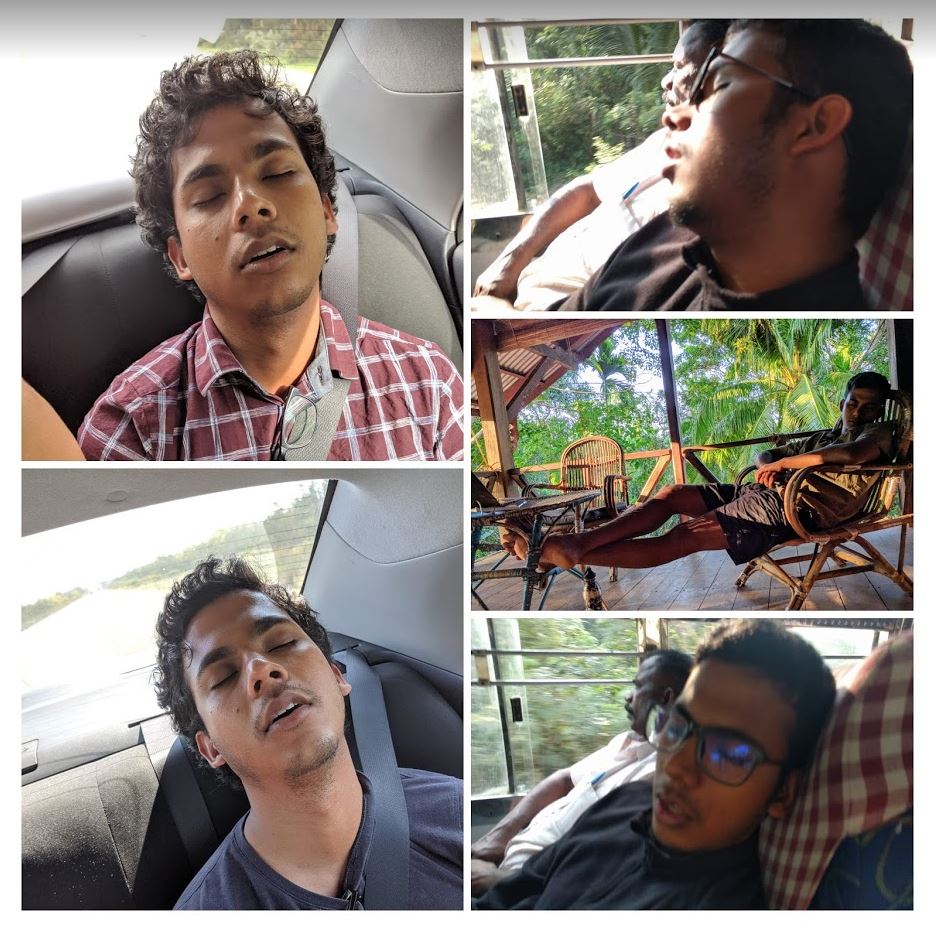43-7 Sunday, Jan. 5 09:15 – 09:30 Invasive toads shift behavioral traits to find water MADELAIRE, CB*; BARSOTTI, AMG; WAGENER, C; SUGANO, Y; BAXTER-GILBERT, J; GOMES, FR; MEASEY, J; Northern Arizona University; University of São Paulo; Stellenbosch University ; University of São Paulo; Stellenbosch University; University of São Paulo; Stellenbosch University cmadelaire@yahoo.com.br
The adaptive nature of invasive species is becoming recognized as facilitating their survival in conditions that differ from their native range. Behavioral changes in invasive populations have been poorly explored but offer a wide potential when combined with physiological traits. For anurans invading xeric habitats, the importance of finding water is relevant for reproduction, to maintain hydration to function optimally and not experience dehydration stress. The water-finding hypothesis (WFH) states that survival can be enhanced through the behavioral ability to find water. We tested the WFH in Sclerophrys gutturalis from their native population in Durban and an invasive population in Cape Town Additionally, we tested if artificially elevated levels of corticosterone (CORT), which is known to increase during dehydration stress, affect water-finding behaviors. In a labyrinth experiment, we observed the toads’ ability to find water in different hydration states (100%, 90% and 80%). We found that individuals from the invasive population took longer to engage in water-searching behavior and spent more time near to the water source after finding it. Also, toads from the invasive population were more active and at 90% dehydration they show higher number of attempts to find water. Moreover, elevation of CORT in fully hydrated toads increased the success of finding water. Our experiment suggests that rapid adaptative water-finding behavior might facilitates survival of an invasive anuran in a xeric habitat. Additionally, we suggest a link between elevated CORT levels and water finding success. Our results lend support to the importance of adaptive behavior in successful invasions and the modulation of water-finding behavior by CORT.
S9-6 Monday, Jan. 6 10:30 – 11:00 Rapid Local Adaptations in an Invasive Frog (Xenopus laevis): the Importance of Functional Trait Measurements to Predict Future Invasions. HERREL, A*; ARASPIN, L; PADILLA, P; COURANT, J; SERRA MARTINEZ, A; REBELO, R; IHLOW, F; BACKELJAU, T; MOKHATLA, M; GINAL, P; RöDDER, D; MEASEY, J; CNRS/MNHN, Paris, France; CNRS/MNHN, Paris, France; CNRS/MNHN, Paris, France; CNRS/MNHN, Paris, France; CNRS/MNHN, Paris, France; Uuniversity of Lisbon, Portugal; ZFMK, Bonn, Germany; RBINS, Brussels, Belgium; Stellenbosch University, South Africa; ZFMK, Bonn, Germany; ZFMK, Bonn, Germany; Stellenbosch University, South Africa anthony.herrel@mnhn.fr
The control and eradication of invasive species is an ever-increasing problem for wildlife management and conservation practitioners. Understanding the potential future spread of invasive species is critical to inform management decisions. One often used tool to predict future species distributions is species distribution modelling (SDM) under alternative scenarios of climate change. Although extremely relevant and insightful, most of these models suffer from two drawbacks: 1) the lack of physiological data describing the dependence of organisms on changes in temperature and hydric state; 2) they ignore any potential for adaptive differentiation of invasive populations. To test what the effect could be of these two parameters we focused on invasive populations of the invasive amphibian, Xenopus laevis. We collected data on anatomy and physiology (temperature dependence of performance traits) for animals from the source population as well as invasive populations. These data were then used to inform SDMs that predict future spread under different climate change scenarios and to test for the potential adaptive divergence of invasive populations relative to the native population in morphology and physiology. Our results show that incorporating physiological data in SDMs does provide different predictions on future distribution ranges with a much higher invasion potential than previously estimated. Furthermore, our results show rapid (less than 30 years) changes in morphology and physiology in different populations suggesting local adaptation. These results stress the importance of using biologically informed data to inform conservation practices.

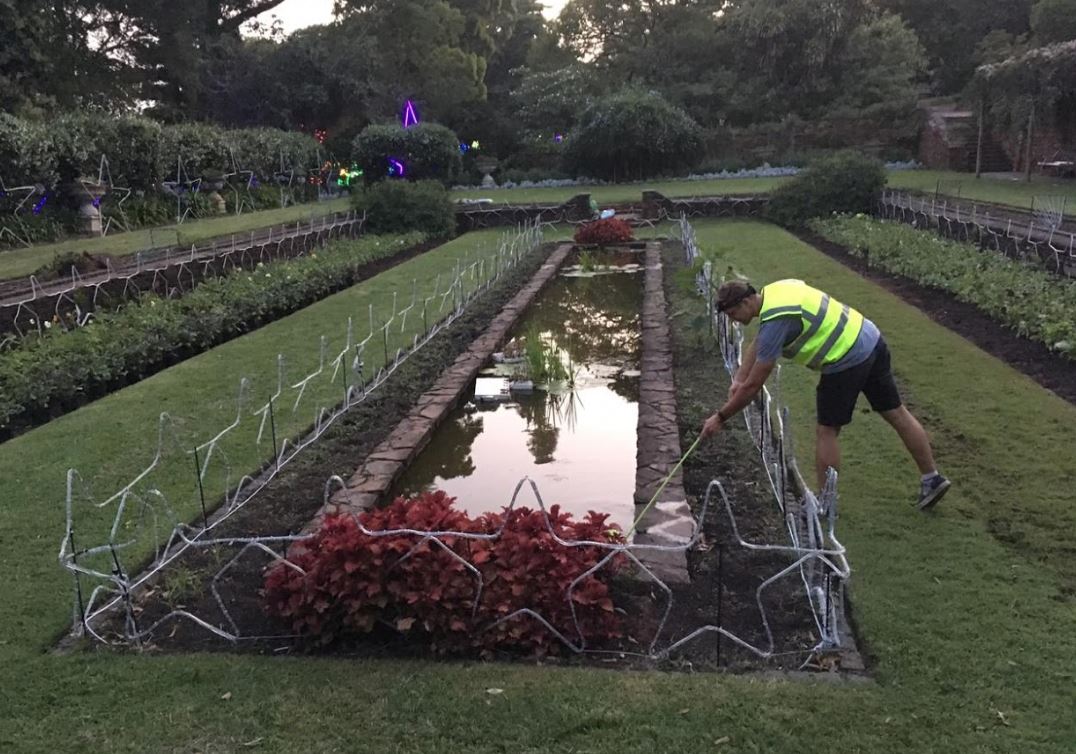
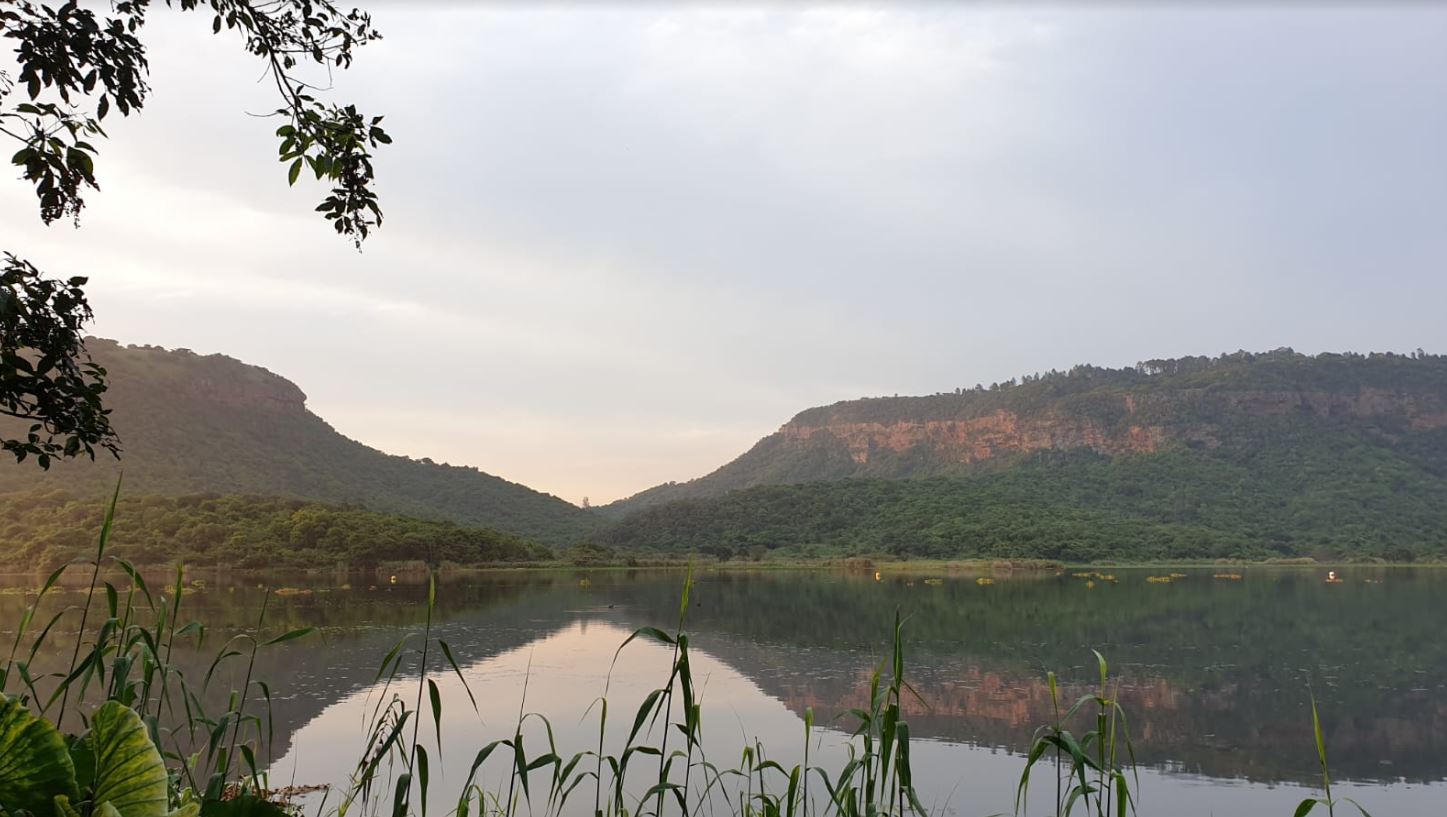
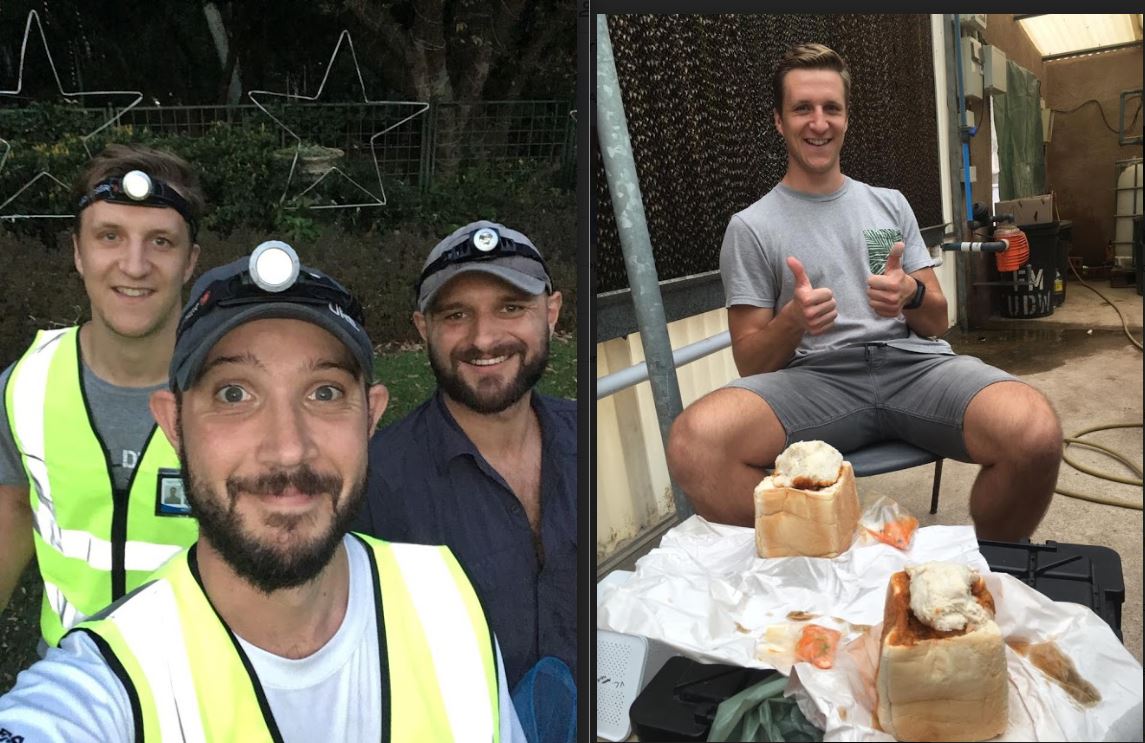

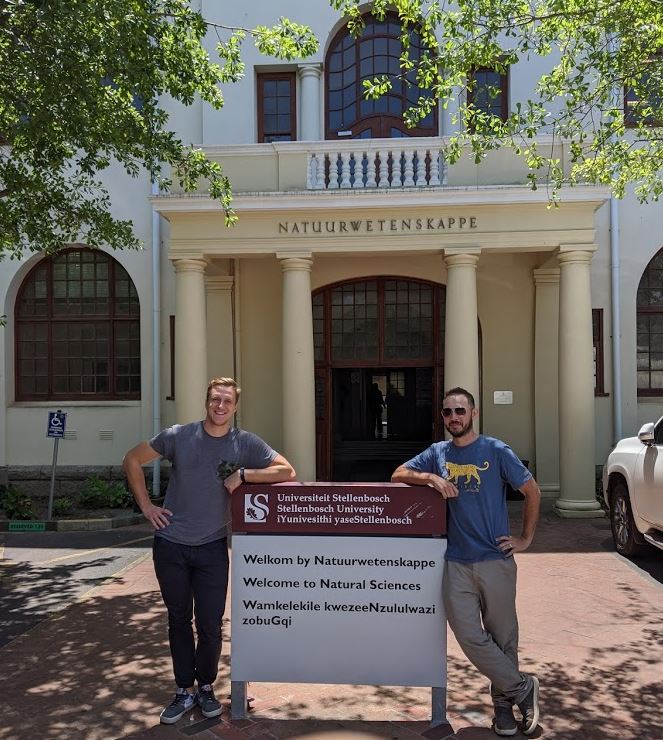


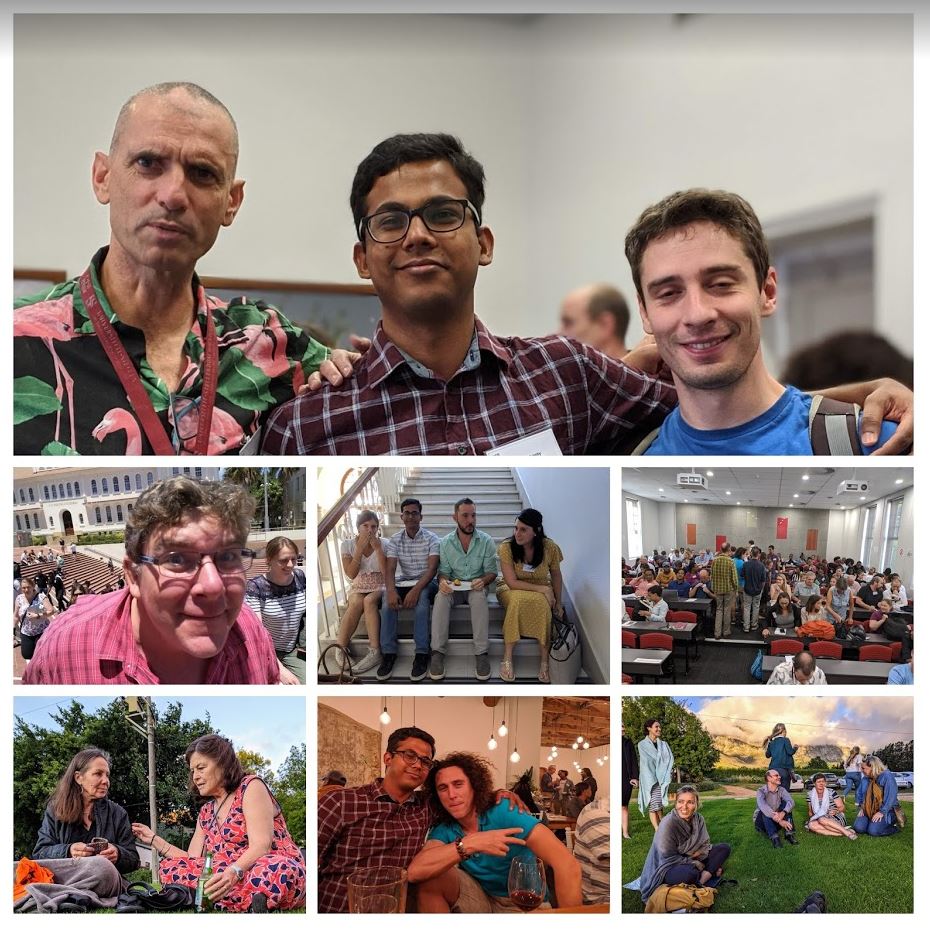

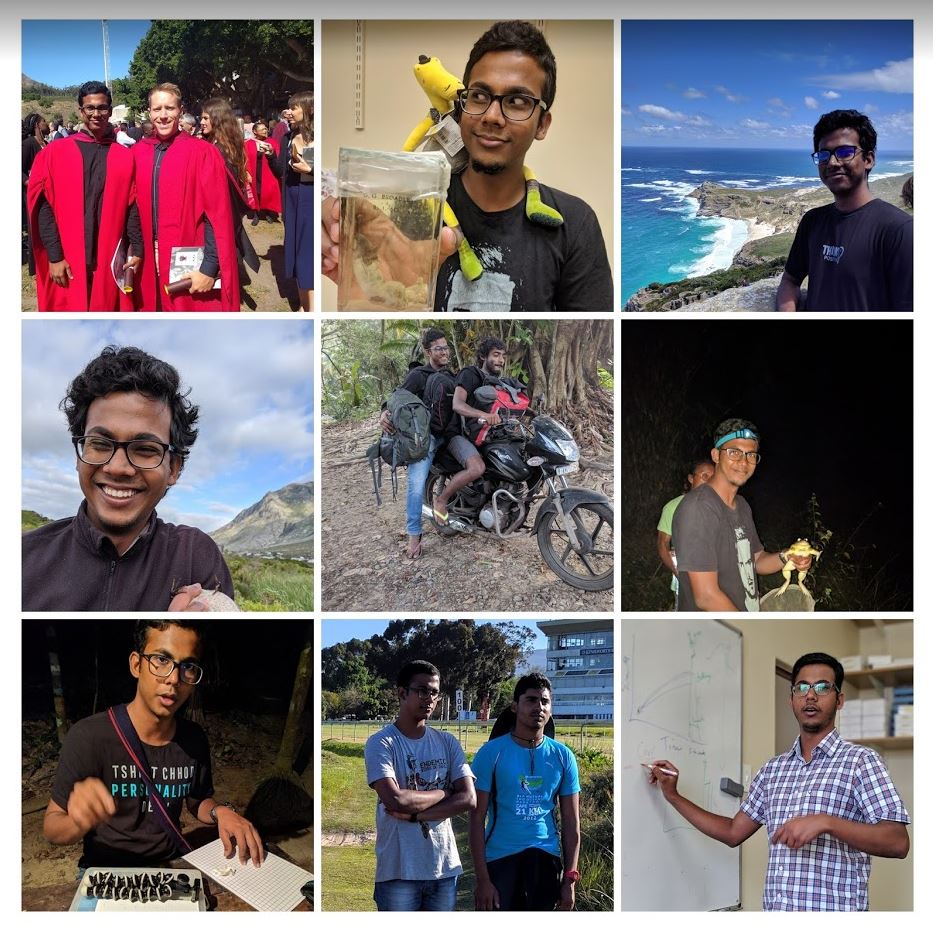 In early 2016, Nitya began to develop his PhD proposal and eventually arrived and registered at SU in July 2016 to present his proposal to the department. Nitya had won a partial bursary from the department that would cover the cost of a flight to and from South Africa each year, and some extra monies for registering for a PhD at SU.
In early 2016, Nitya began to develop his PhD proposal and eventually arrived and registered at SU in July 2016 to present his proposal to the department. Nitya had won a partial bursary from the department that would cover the cost of a flight to and from South Africa each year, and some extra monies for registering for a PhD at SU. 